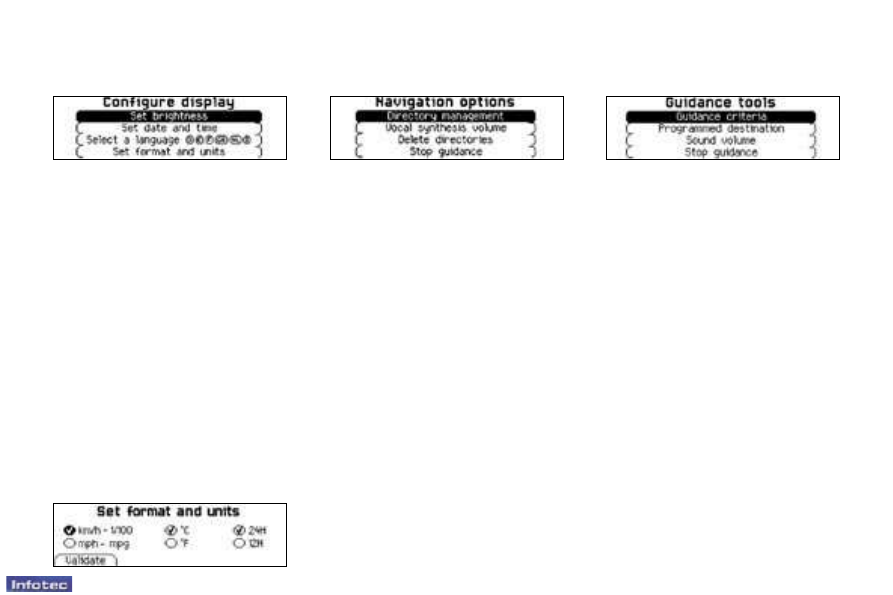Peugeot 206 CC Dag (2006 year). Instruction - part 4

47
-
Audio equipment and telematics
01-01-2006
Display configuration
From the general menu, the
"Configure display" menu gives
access to the following parameters:
- Adjustment
of
the
display
brightness;
- Adjustment of the date and time;
- Selection of the language of the
display and voice information
(English,
German,
Spanish,
French, Italian, Dutch);
- Adjustment of formats and units.
This enables you to choose
between Km/h or mph and degrees
Celsius or Fahrenheit and to modify
the format for the hours (12 or 24
hour mode).
Navigation options
From the navigation/guidance menu,
the
"Navigation options" menu
offers the following options:
- Management of the directories. It
enables an address stored under
a description to be renamed or
deleted. To do this, select the
directory and the description to be
changed;
- Voice
synthesis
volume
adjustment;
- Deletion of all data stored in the
two directories;
- Stopping or resuming of guidance.
Two messages may be displayed
depending on the previous status:
"Resume guidance" or "Stop
guidance".
Guidance tools
Access to the
"Guidance tools"
menu is by pressing the
"VAL"
button during guidance.
It enables:
- the current guidance criterion to be
changed,
- the programmed destination to be
displayed or changed,
- the voice synthesis volume to be
adjusted,
- the current guidance to be
stopped.